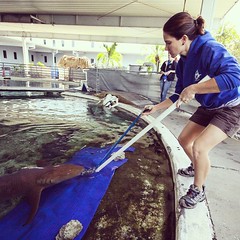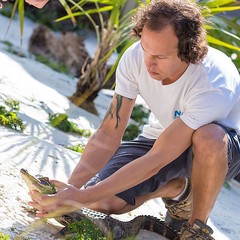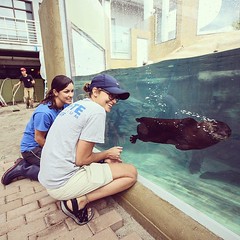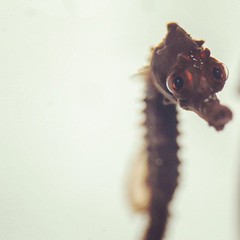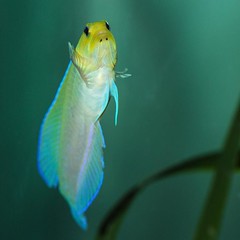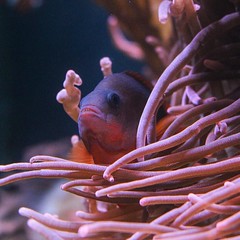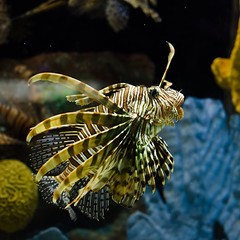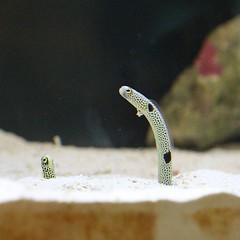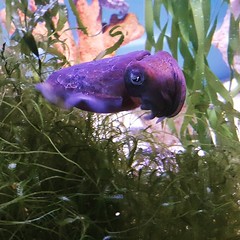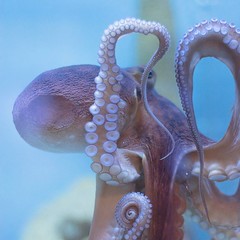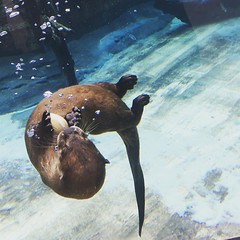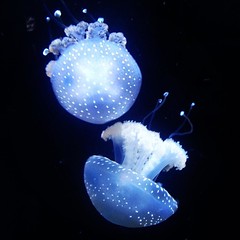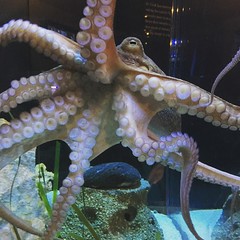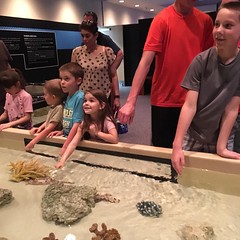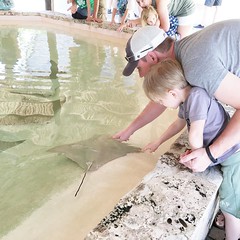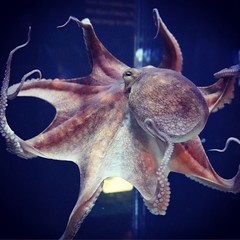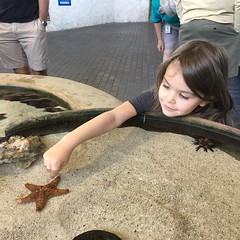1600 Ken Thompson Parkway
Sarasota, FL 34236
Ph: (941) 388-4441
Hours: 10AM - 5PM
A 501(c)3 nonprofit organization.
Abbey
Pygmy killer whale (Feresa attenuata)
(MML 9709)
| Age Class | Adult |
| Gender | Male |
| Date Stranded | September 30, 1997 |
| Location of Stranding | Gulfside of Casey Key, FL |
| Date of Arrival | September 30, 1997 |
| Number of Days of Care | 45 Days |
Final Disposition
Died on 14 Nov 1997
Abbey was seen with one other conspecific which departed early during the course of stranding. Initially he was weak, required support, possible pneumonia, occasional arching, underweight. Started on fluids, antibiotics, supportive care including physical therapy. Initial chest ultrasound not remarkable, but Right-sided congestion noted upon auscultation. Began eating on day 9, weak swimming. Removing possible stress of humans by use of floatation harness decreased frequency of arching dramatically. By day 22 Abbey was swimming actively unaided. Bloodwork charcterized by elevated ESR (~35-50), moderate elevation of WBC (~5.0-13.9), and elevated liver enzymes (ALT= 100-500). On day 29, treated with Droncit in case of liver trematodes; herring removed from diet in order to reduce fat load on liver cells. Ultrasound of liver not remarkable (day 36). On day 42 dramatic downward trend noted including lethargy, inappetance, vomiting, diarrhea; nonregenerative anemia developed, possibly due to administration of chloramphenicol. Remaining 3 days characterized by alternating periods of inappetance and excellent appetite. Abnormal lymphocytes seen on last day before death. Necropsy revealed pneumonia, septicemia, and parasite ova in the brain.
Cause of Death: Combined bacterial pneumonia, hepatic and possibly myocardial compromise with terminal septicemia (Proteus mirabilis, Pseudomonas sp). Additional finding of probable osteomyolitis in the peduncular vertebrae.
Lessons:1- Males of this species have single long "genital fold".
2- Bloodwork not very helpful in this case,(nor in 9313) especially WBC. May be a species difference.
3- Chloramphenicol may have caused bone marrow suppression resulting in anemia and abnormal lymphocytes.
4- Whole body radiographs may be helpful when underlying causes of disease are unknown.
5- Floatation devices should be developed to reduce stress of human presence for some species.
6- This is the second live Feresa stranding; both males were accompanied by conspecific(s) close to the beach.
7- CT or MRI may be helpful when neurologic problems are suspected if movement can be controlled and the animal will fit inside the machine.
Presentation
Rhinehart, H. L., C. A. Manire, F. W. Klutzow, and G. D. Bossart. "Brain lesions and clinical signs in two pygmy killer whales (Feresa attenuata) associated with Nasitrema sp." Poster presentation at the International Association for Aquatic Animal Medicine 30th annual conference, Boston, MA. 1999.
